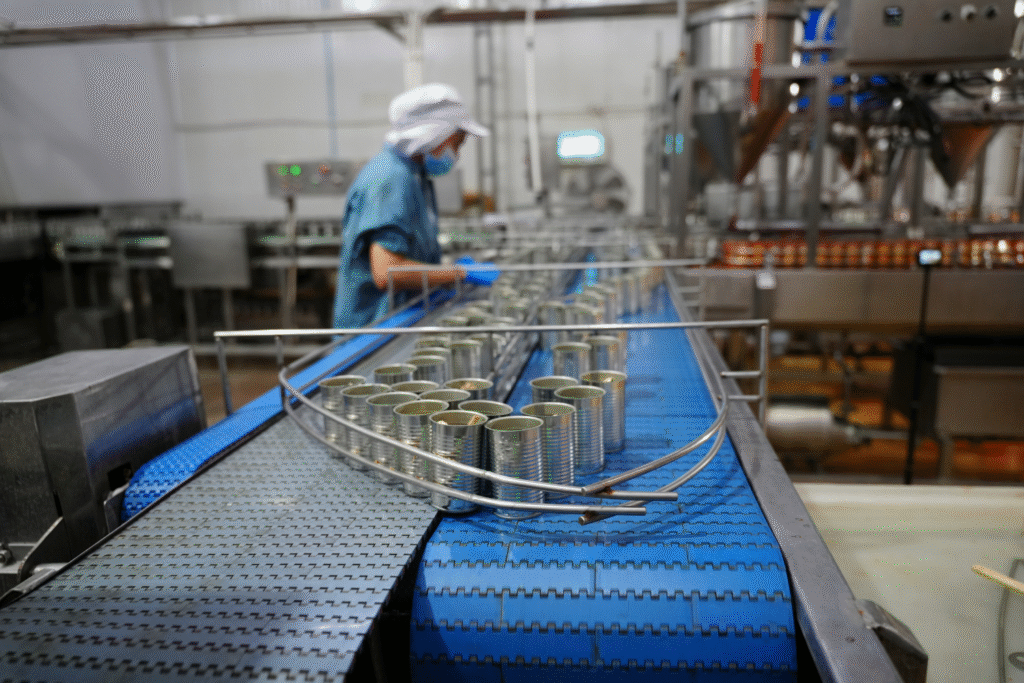Troubling findings shake trust across the pet industry.

A wave of concern has swept across the pet food world as investigators uncovered safety failures inside some of the most recognizable brands on store shelves. The discoveries surfaced after regulators tied recent contamination issues to companies that millions of families rely on each day. Behind the scenes, the findings rattled veterinarians, retailers and owners who believed these products were closely watched. With trust suddenly shaken, the industry now faces a reckoning that has been building for years.
1. Regulators confronted a major supplier over Salmonella risks.

Federal investigators found Salmonella contamination in products made by Mid America Pet Food, triggering recalls across multiple brands. According to the United States Food and Drug Administration, the 2023 recall covered Victor, Eagle Mountain, Wayne Feeds and others after routine testing uncovered contamination linked to several human illnesses. The discovery forced the company to halt operations at one manufacturing facility while investigators searched for the contamination source.
This development sent shockwaves through the industry because many retailers relied on these brands for years. Once the contamination surfaced, the company faced pressure from regulators and distributors demanding proof that other facilities were safe.
2. A separate firm faced scrutiny for toxin-contaminated grain shipments.
Another troubling case unfolded in 2020 when Sunshine Mills, Inc. recalled dog food products after aflatoxin levels exceeded safe limits. These toxins can develop in improperly stored grains and pose severe health risks to pets, as reported by SELF Magazine. The company’s recall included multiple brands and required pulling large quantities of food from the market.
This incident highlighted weaknesses in grain sourcing and storage practices that left consumers questioning broader industry standards. As more details emerged, veterinarians urged pet owners to watch for symptoms linked to toxin exposure, deepening concern about the reliability of widely available pet foods.
3. Veterinarians warned that recall trends expose deeper systemic flaws.

Across clinics, veterinarians noticed an alarming surge in recalls connected to contaminated ingredients and inconsistent quality control. As stated by the American Veterinary Medical Association, recent recall patterns suggest the industry continues to struggle with supplier oversight and ingredient verification. These concerns carry significant weight because veterinarians often detect safety issues before regulators release public warnings.
Their observations painted a disturbing picture of repeated breakdowns across multiple companies. This pattern intensified scrutiny on large manufacturers whose supply chains stretch across states and countries. The mounting evidence revealed vulnerabilities that no longer looked isolated or accidental.
4. Internal failures raised suspicion about long standing safety practices.

As investigations progressed companies acknowledged weaknesses in the safety checks used to verify incoming ingredients. Certain shipments reached production lines without thorough documentation, raising concerns about blind spots in systems that were meant to catch problems early. The gaps were not intentional but reflected processes that had grown outdated.
These revelations unsettled regulators who expect major brands to maintain airtight controls. When established systems show signs of fatigue, the risk extends far beyond a single product line. The industry suddenly faced questions about how many problems slipped through unnoticed.
5. Whistleblowers described inconsistencies inside warehouse operations.

Employees at several distribution centers reported variations in storage temperatures and tracking practices that could compromise ingredient integrity. Their accounts showed that even well known companies sometimes struggle to maintain standards across multiple facilities, especially when volume spikes.
These inconsistencies raised red flags because unsafe conditions in one warehouse can affect products shipped nationwide. It became clear that maintaining safety requires more than compliance on paper. It demands constant attention in every location where ingredients are stored or handled.
6. Supply chain fragmentation made contamination difficult to trace.

As regulators traced contamination backward they encountered records spread across different suppliers, processing plants and distributors. The broken trail complicated efforts to determine how much product might be affected. Even small gaps in documentation can stall an investigation that depends on precise tracking.
The delays increased anxiety among retailers and consumers who wanted clear answers. Every missing record suggested a structural weakness in the system. Investigators now emphasized the need for stronger traceability across the entire industry.
7. International sourcing networks intensified safety concerns.

Manufacturers who rely on suppliers from multiple countries often face challenges ensuring consistent ingredient quality. While global sourcing is common, it introduces opportunities for contamination if oversight lags. Several brands involved in recent recalls used ingredients processed overseas before reaching domestic plants.
This network added complexity to investigations and increased pressure to verify foreign supplier compliance. In a market where trust is essential, any uncertainty surrounding international partners quickly becomes a serious risk.
8. Independent laboratories detected nutrient inconsistencies in samples.

Third party testing revealed nutrient deviations in certain batches, suggesting instability in manufacturing processes. Although these deviations were not immediately dangerous, they signaled irregularities that should not appear in tightly controlled production environments.
These findings exposed a deeper problem. When nutrient levels fluctuate unexpectedly, it points to equipment issues, mixing errors or inconsistent ingredient quality. No matter the cause, the irregularities pushed companies to reconsider how their manufacturing systems were monitored.
9. Retail partners demanded stronger guarantees before restocking.

Major retailers requested detailed safety plans before agreeing to continue carrying affected brands. Their concerns went beyond customer trust. They needed assurance that future shipments would not expose them to liability or public backlash.
This pressure created a pivotal moment for companies already scrambling to correct their processes. Retailers make decisions quickly when their shelves are at risk, and several prepared to limit or suspend orders until they received convincing proof of improvement.
10. Industry wide reforms now hinge on restoring consumer trust.

As scrutiny intensified companies confronted the reality that rebuilding trust requires more than recalls and apologies. They must overhaul systems, strengthen supplier contracts, upgrade testing standards and demonstrate transparency at every step. Failing to do so risks losing consumer confidence in a market where loyalty is fragile.
The recent failures sent a message that safety cannot be assumed. It must be enforced every day, in every facility, by every supplier. Only then can these companies regain the confidence of the families who rely on them to protect the animals they love.
